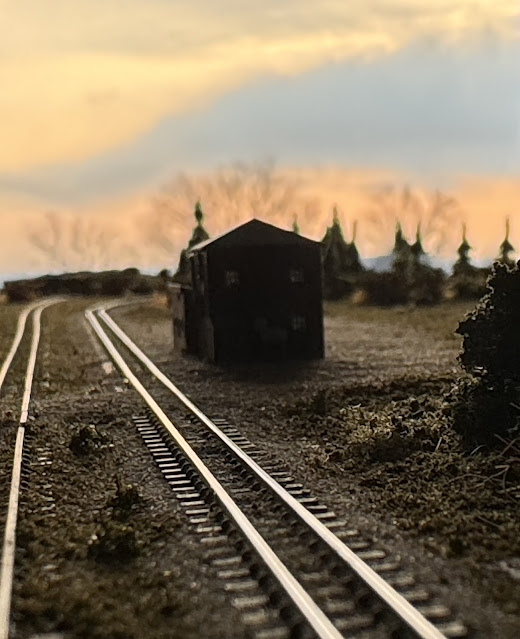It's been a while since I posted to the blog and several projects have been completed (and started) since the last update. This one has quite a few pics, hopefully that helps make up for the delay.
Stockists Update (aka where to buy CCE Models):
Last fall I agreed to send CCE brand kits and parts to two retailers: TGauge.com (with worldwide distribution) and Fusion Scale Hobbies in the USA. It's taken a while but they both have a few items in stock currently. I admit to being somewhat lax about supplying them with more. I get involved with development a new model and test prints, and don't really dwell on production. I'm going to try get better at that in 2024!
If you have some specific models you'd like, please email me and I'll get a batch done. I'm currently working on some M scale.. errr.. ZZ scale items for someone who emailed me. And for that matter, if you have a new model or decal request I might be able to help out with that as well.
Rolling Stock Roundup:
I've been quite busy working on T-scale rolling stock this spring.
After getting good results with the revised open hoppers, I expanded to doing more fine details like handrails and pipes--and a pantograph-- on models that I would've previously attempted with etched brass or steel. I have handrails down to less than 0.20mm diameter in places, but up to around 0.23mm when more strength is called for. The pantograph pick ups on the E-33 below are thinner than that! Success depends on designing for strength, and properly placing the supports and using small contact points (down
to 0.19mm) in places--but not all. My normal support contact area is usually 0.23mm diameter.
Another tip is to let the model air dry after washing for 24 hours or
so, then trim the smallest supports away with a sharp X-acto blade. The other key to success is the 80-20 blend of Phrozen Aqua 8K/Onyx Impact Plus (see my previous blog post).
I did a brand-new locomotive: the GE EL-C (also known as the E-33 on Penn Central/Conrail). This arose from my work on the N&W Train Master, which sparked my interest in the Virginian Railway. I went down the rabbit hole and now we have the EL-C and a Virginian prototype 80-ton hopper car as well in the line up.
Above is a test model (notice the failed handrail). Below is the final model as a Conrail E-33.
Here's a new 60' modern tank car (really a much-revised re-do of my old design that used etch for the railings/platforms). This is 100% 3D printed in resin and capable of withstanding handling (gently).
Here's the ACF 4750 cu ft covered hopper (PRR-Conrail H-45) from the last blog decorated with decals. This model will be at stockists soon.
Here's a Train Master done in Southern Railway decor.
The Demise of M-Scale!
But don't worry, I'm still modeling in 1:300 scale.. I simply learned that this scale has already been named "ZZ" scale. Apparently a Japanese company has made some models in this scale previously, so I guess I've been doing ZZn3 for the WP&Y, EBT, D&RGW and D&SNG models. I'll update any model kits/decals as I get to them. Speaking of which, I made this EBT caboose. Note: I'm aware that the number is wrong and I've since corrected it to 27. The real question is did they have the roofwalks painted in Oxide Red or was it black?
WP&Y Layout Update:
I'm about 98% done! There needs to be a little detailing done and maybe a figure or two added. I kinda want an old GMC Suburban to park in the lot at Fraser. There is a really pesky track continuity issue that has arisen at the turnout but I'll get that squared away. Some of the lessons learned on this layout are that this T-gauge Flexi-track can be unforgiving and it does expand and contract. Any future track will be securely glued with construction cement to the roadbed (not wood glue as I did this time) and will have multiple feeders. I have 3 on this but should've added more.. The new track feeder attachment from TGauge.com will definitely come in handy for this.
Well, that's it for now, so until next time happy modeling!
- Jesse

























.JPG)













.JPG)









